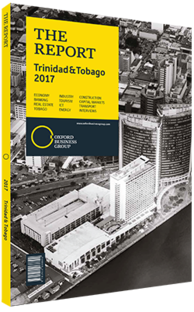Mark Loquan, President, The National Gas Company of Trinidad and Tobago (NGC): Interview

How is gas supply developing in the country?
MARK LOQUAN: We’re making headway on the Gas Master Plan’s primary focus of gas certainty. BP’s Trinidad Onshore Compression project was commissioned in April 2017, with the potential to deliver an additional 200m standard cu feet (scf) per day, and the principle terms for the Angelin field were agreed upon in May. The Juniper field will also come onstream in the third quarter of 2017 as scheduled. We’re further encouraged by BHP and Shell’s deepwater drilling. Additionally, Shell’s acquisition of BG in 2016 and Chevron’s subsidiary Centrica in 2017 allows them to take a fresh look at assets – which we know have the potential to yield gas. We’re also focusing on cross-border fields, particularly Dragon, with Venezuela. Discussions on Dragon have advanced with the formation of the general management committee, along with the technical and commercial sub-committees. These are all populated under a tripartite structure between Shell, PDVSA of the Venezuelan government and NGC.
The next stage will be executing the gas supply agreement and progressing its technical and commercial underpinnings. By leveraging the Shell platform, that is, utilising existing infrastructure, the aim is to improve gas supply to the petrochemical and liquefied natural gas sectors by 2019/20, significantly improving supply from 2015 projections. We are also focusing on marginal fields. The focus on marginal fields has seen the purchase of Centrica’s stake in 1a/1b block by De Novo and NGC’s 20% acquisition of 1a from Petrotrin. Perenco, entering the market in December 2016, with its purchase of Repsol’s 70% interest in the Teak, Samaan and Poui fields, could help us change the architecture of stranded assets. The gas master plan commissioned by Poten & Partners estimates that there are potential reserves of 20trn-40trn scf, while others suggest 30trn-50trn scf, so it is a question of navigating the short term until 2022, while ensuring proven reserves satisfy both domestic and export demand.
To what extent is further downstream diversification and activity feasible?
LOQUAN: T&T has 11 ammonia plants and seven methanol plants, which aren’t easily replicated. It’s much easier to add another plant to the complex, reducing management and shared services costs, as opposed to opting for a new jurisdiction. Downstreamers also have access to services in the Point Lisas Industrial Estate, and an extensive energy services sector that understands how to service these plants. But when we look at petrochemicals, the question of gas certainty and allocation is paramount. We’re confident we can address these concerns given upstream developments, but it’s a constraint short term. We will also look closely at non-gas-based development, methanols to olefins, plastics and aluminium, with a possible expansion of Point Lisas to allow those adjacencies to take place, leveraging our port and excess liquidity.
How is T&T’s gas industry expanding overseas?
LOQUAN: There’s enormous potential for collaboration with Guyana. Petrotrin’s refinery could be of great help in developing the Liza oil field finds, as the oil could come directly to the Petrotrin refinery. While there’s less gas-based development, NGC Group of companies, the business chambers and our energy services firms can play a role in ship-to-shore services, technical training and other ancillary services. T&T’s experience with navigating and structuring agreements with upstreamers could also be valuable to ensure Guyana succeeds in extracting sufficient benefit from its natural resources. Cuba and Puerto Rico are also promising, especially within the areas of liquefied petroleum gas, storage, lubricants and the need for gas. We can also learn from countries which may be more advanced in the development and use of renewables, such as Chile and Costa Rica. An international strategy is being developed which can focus our resources through the government, chambers, universities and companies.
You have reached the limit of premium articles you can view for free.
Choose from the options below to purchase print or digital editions of our Reports. You can also purchase a website subscription giving you unlimited access to all of our Reports online for 12 months.
If you have already purchased this Report or have a website subscription, please login to continue.

